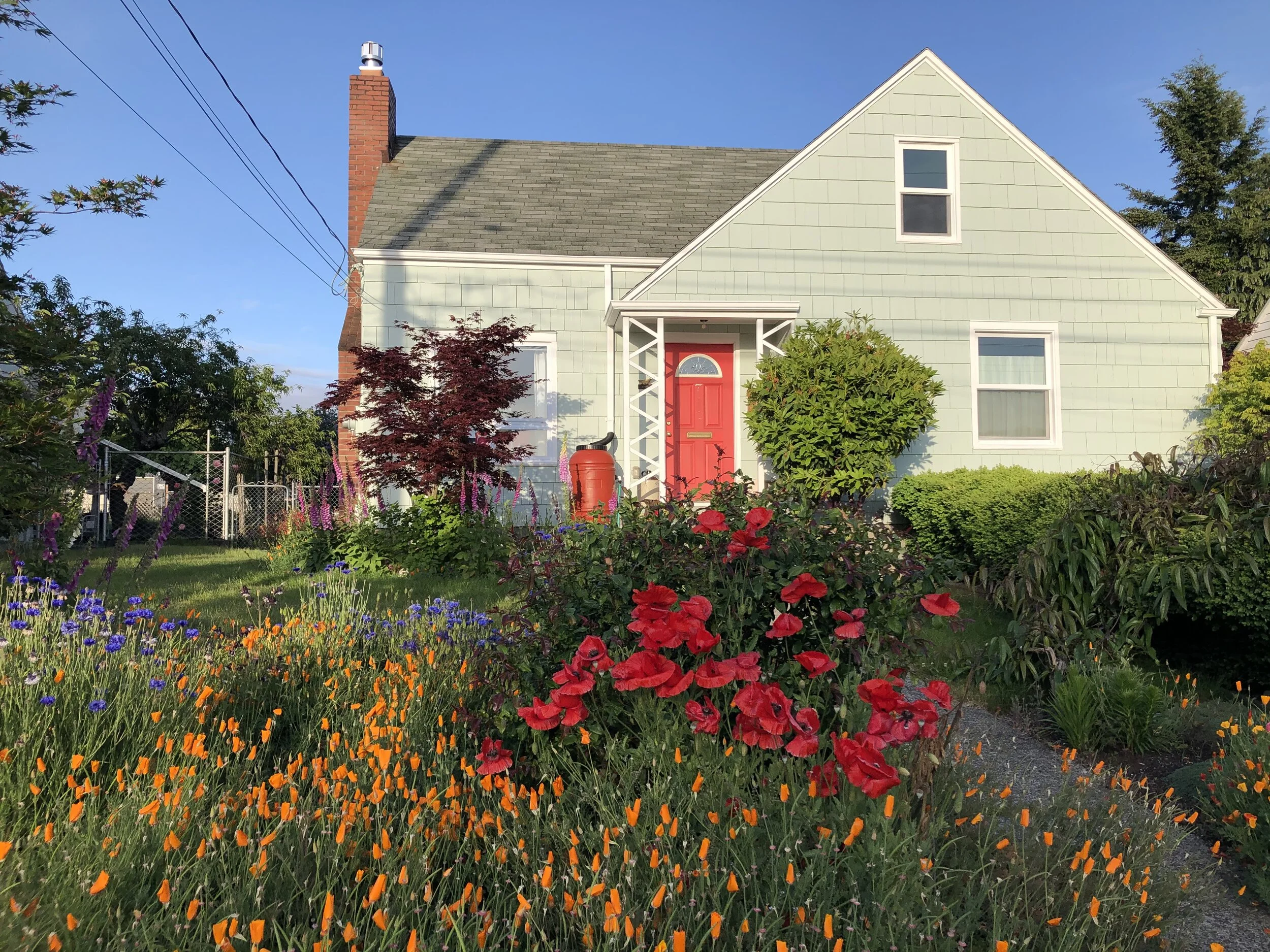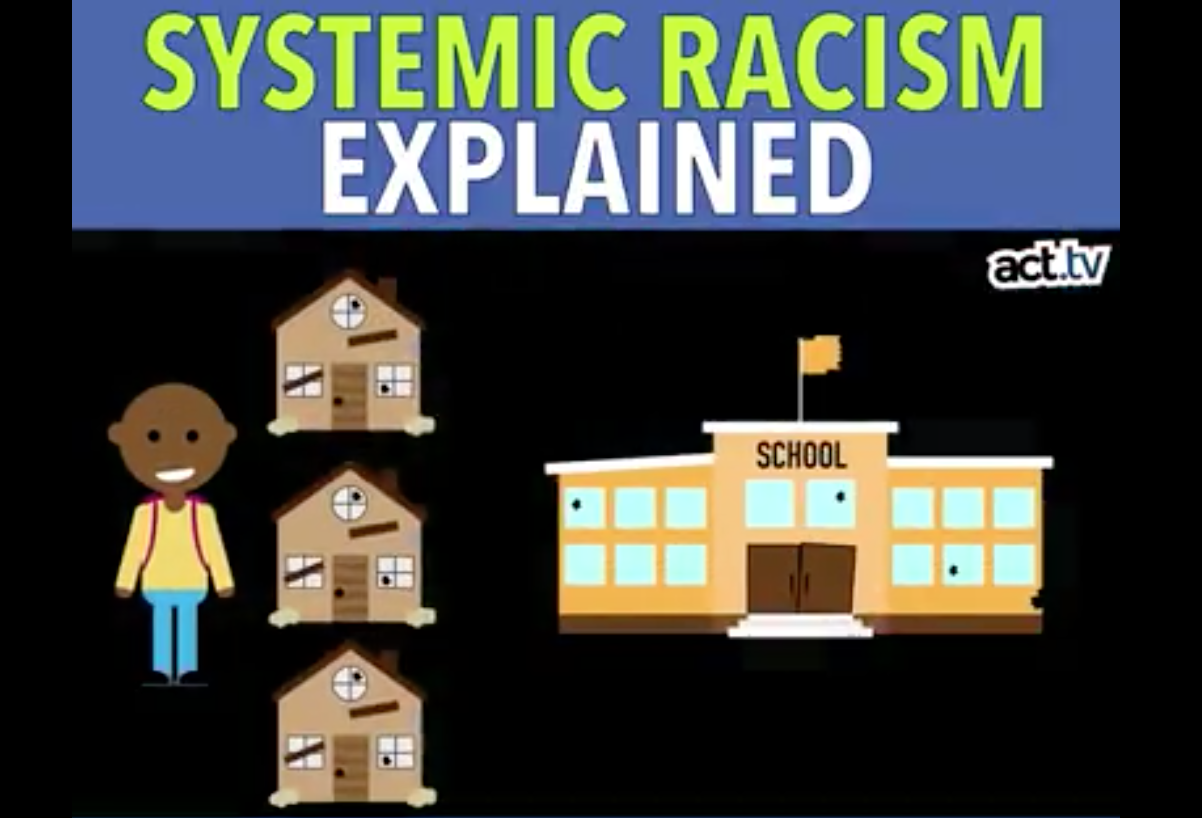Who hasn’t been welcome here? What powers and policies continue to exclude?
We’re working on gathering reading resources and other material addressing systemic racism in America as it relates to housing, lending, and home ownership. Right now, we just have a short list, but we’re confident it will grow as we continue to work on educating ourselves about this system that we work in and from which we benefit. And we welcome your suggestions if you’re moved to send them!
The house in the image is our home. One we bought together at the age of 25 with the help of President Barack Obama’s first time homebuyer program. That’s way before we worked in real estate. Michael served in a restaurant and I was a part time office administrator at Peace Lutheran. (This morning it strikes me as amazing that we, two young white people, benefited from a program under the first Black president when so many federal policies have excluded BIPOC from access to loans and homeownership decade after decade. Also, I don’t think we’re alone in really missing that man.) And I’m reevaluating the sweet story I know about our neighborhood. The story about these solid, modest post-war homes that welcomed veterans and their families to settle down and settle in. Who wasn’t welcomed? Beyond being unwelcome, who was explicitly refused access? That’s what I’m thinking about now as I sit in my quiet house with its big back yard in a part of town that isn’t fancy or trendy, but that is still fraught with a history of racist exclusion.
Equity Work and Redlining in the City of Tacoma
In 2014 the City of Tacoma established the Office of Equity and Human Rights (OEHR). Visit the OEHR to learn more about what the City of Tacoma is working on now regarding “equity, opportunity, partnerships, and accountability.” You’ll find demographic information, and you’ll see who is represented and who is underrepresented within our city’s workforce. The city also shares a redlined map of Tacoma from 1937, as well as an example of a racially exclusive neighborhood covenant in 1944 that stated:
“No part or parcel of land or improvement thereon shall be rented o re)eased to or used or occupied, in whole or in part, by any person of African or Asiatic descent, nor by any person not of the white or Caucasian race, other than domestic servants domiciled with an owner or tenant and living in their home.”
We’re encouraged that our city is moving to work on equity and representation. As the City of Tacoma site states, “The Office of Equity and Human Rights is committed to uncovering barriers that prevent people from achieving their full potential and creating better outcomes for all.” Now it’s our job to watch for progress, watch for problems, watch for continued opportunities to improve, to be people committed to this work, and to vote for people and policies who will continue this work.
Systemic Racism in Lending & Housing - Educational Resources List
Our goal is to add to this list and make it a living, growing resource for us, for other real estate professionals, and for any citizen, community member, or client to consider.
Tacoma News Tribune Article: How racism kept black Tacomans from buying houses for decades
How racism kept black Tacomans from buying houses for decades, by Kate Martin
Published in August 2018, the article includes a 4.5 minute video titled How a government program blocked people from buying homes, by David Montesino that’s worth watching before or after you read.
“On maps that lenders and real estate agents used, some neighborhoods were “redlined” — literally marked in red — to designate them as the city’s least safe housing investments. Neighborhoods with apartment buildings, widely varying construction styles or a general run-down appearance were seen as poor returns.
But in the eyes of many of the country’s bankers, nothing downgraded an otherwise acceptable neighborhood like the presence of black families, records from the time show over and over again.”
Book: The Color of Law: A Forgotten History of How Our Government Segregated America, by Richard Rothstein
Skip Amazon and order from a local bookstore like King’s, or from an independent, black-owned book store on this list at the Literary Hub
Or order it from Elizabeth’s Bookshop & Writing Centre, founded by Rachel Cargle, where a portion of all sales goes to The Loveland Foundation “making mental healthcare accessible for Black women and girls.”
“We like to think of American history as a continuous march of progress toward greater freedom, greater equality, and greater justice. But sometimes we move backward, dramatically so. Residential integration declined steadily from 1880 to the mid-twentieth century, and it has mostly stalled since then.”
Article: The Case for Reparations, by Ta-Nehisi Coates in The Atlantic
Image from The Atlantic, Carlos Javier Ortiz
“They were no longer fleeing in hopes of a better deal elsewhere. They were charging society with a crime against their community. They wanted the crime publicly ruled as such. They wanted the crime’s executors declared to be offensive to society. And they wanted restitution for the great injury brought upon them by said offenders. ”
“The American real-estate industry believed segregation to be a moral principle. As late as 1950, the National Association of Real Estate Boards’ code of ethics warned that “a Realtor should never be instrumental in introducing into a neighborhood … any race or nationality, or any individuals whose presence will clearly be detrimental to property values.” A 1943 brochure specified that such potential undesirables might include madams, bootleggers, gangsters—and “a colored man of means who was giving his children a college education and thought they were entitled to live among whites.”
The federal government concurred.”
Statement on the Historic Hearing on H.R. 40 - a Bill to Establish a Commission to Study and Develop Reparation Proposals for African Americans
If you read Ta-Nehisi Coates’ article above, you’re going to come across H.R. 40 frequently. What is H.R. 40? “This bill establishes the Commission to Study and Develop Reparation Proposals for African-Americans. The commission shall examine slavery and discrimination in the colonies and the United States from 1619 to the present and recommend appropriate remedies. Among other requirements, the commission shall identify (1) the role of federal and state governments in supporting the institution of slavery, (2) forms of discrimination in the public and private sectors against freed slaves and their descendants, and (3) lingering negative effects of slavery on living African-Americans and society.” - Congress.gov
Originally sponsored by former Congressman John Conyers, now Congresswoman Sheila Jackson Lee of Texas has taken up the cause. Following is a link to her press statement on Juneteenth - June 19, 2019:
Representative Sheila Jackson Lee’s Statement on the Historic Hearing on H.R. 40 - a Bill to Establish a Commission to Study and Develop Reparation Proposals for African Americans
“This historic discrimination continues: African-Americans continue to suffer debilitating economic, educational, and health hardships…A closer look at the statistics reveals the stark disparity in these areas. Black household wealth is less than one fifth of the national average. The median black household had a net worth of just $17,600 in 2016. Yet in that same year, the median white house hold held $171,000 in wealth while the national household median was $97,300. The black unemployment rate is 6.6%, more than double the national unemployment rate. Approximately 31% of black children live in poverty, compared to 11% of white children. The national average is 18%, which suggests that the percentage of black children living in poverty is more than 150% of the national average.”
5 Minute Video: Systemic Racism Explained, from act.tv
“Kevin and Jamal live only a few streets away from each other. So how come they’re growing up in such different worlds?”
Image from Stuff You Missed in History Class
2 Part Podcast: A Brief History of Redlining, from Stuff You Missed in History Class, by Holly Frey & Tracy Wilson
A Brief History of Redlining, Part 2 - 32 minutes
A Brief History of Redlining, Part 1 - 31 minutes
“For roughly a century after the abolition of slavery, neighborhood segregation was legally enforced. Regardless of whether people wanted to live near other people who were similar to them, the law made it next to impossible to live anywhere else. ”
Image from NPR.org
Episode from NPR’s Code Switch: Location! Location! Location!
Location! Location! Location! - 35 minutes (full transcript available alongside the audio story)
“When you’re scrolling through your news feed, pick a national news story that has ostensibly nothing to do with race or residential segregation, right? Then think about the ways that housing is actually shaping that story, the way place is used as a shorthand for politics or class, who the voices in that story are and what those voices sound like.”
Image from NPR.org
Video from NPR’s Code Switch with Gene Demby: Housing Segregation In Everything
Race & Redlining: Housing Segregation in Everything - 6 minutes
This video is a partner to the 35 minute Code Switch podcast episode listed above. We learn in different ways, so it’s important to present information in as many ways as possible here. And for many of us, repetition is important. So, even if you already listened to the podcast episode, find a few minutes of time and give this short film a watch.
The resources above are just a place to start. These are not the end, the full picture, or all one needs to know. It’s a beginning.


















